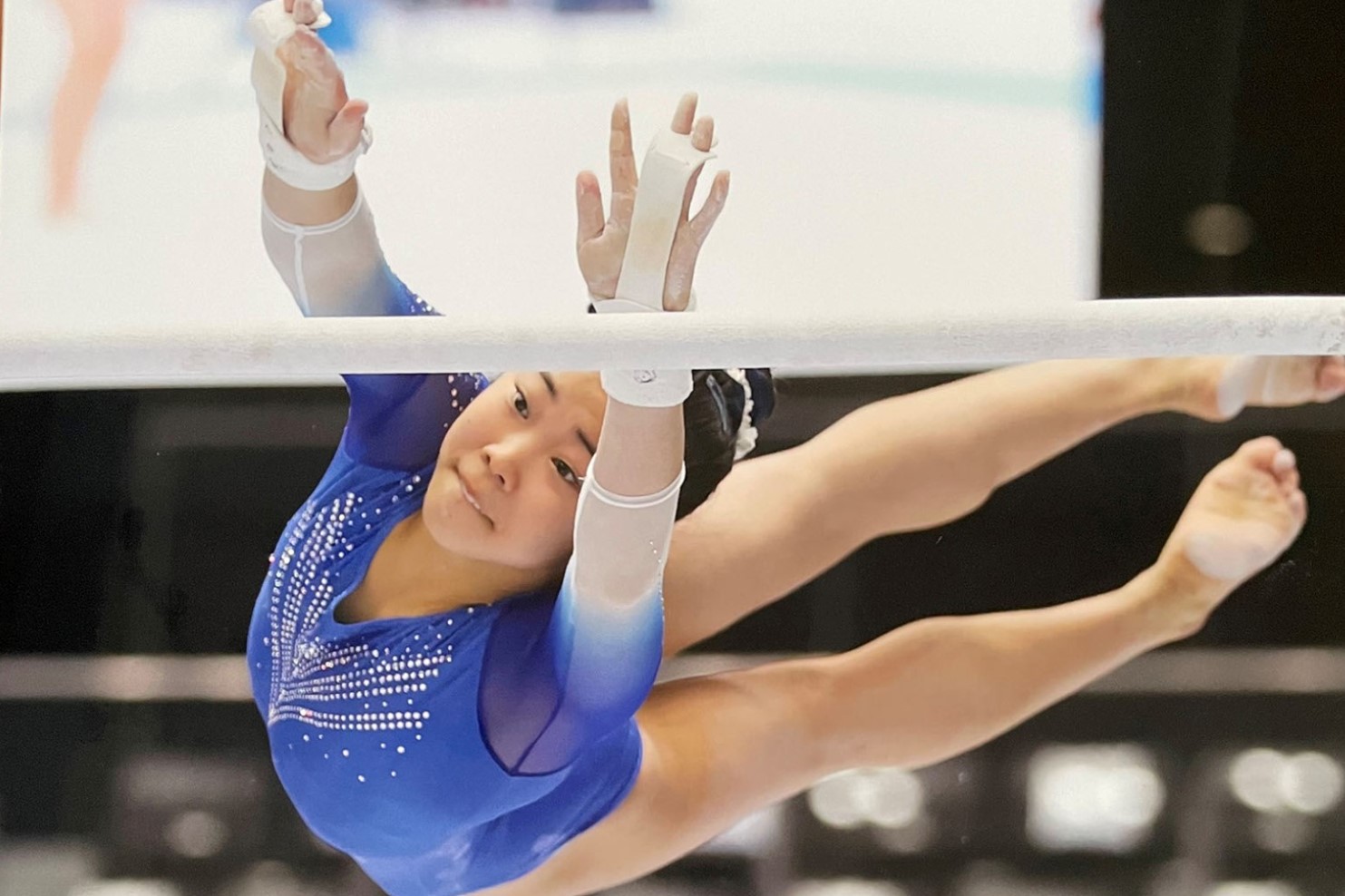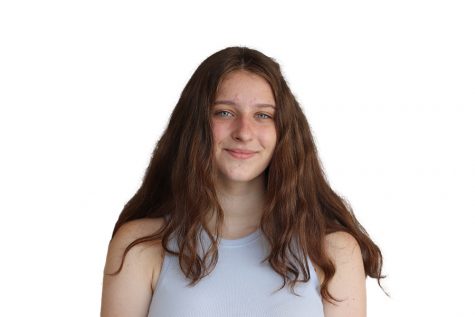
Triumphs and tribulations: Ui Soma’s career illustrates the glory and setbacks in elite gymnastics
February 9, 2022
A gymnast walked out onto the vault runway and took a deep breath. She knew that she had to perform her best, since this competition, the 2021 Japan NHK Trophy, was her Olympic Trials — the chance for her to prove she could compete on the Olympic stage. She smiled and waved to the judges, and to the audience. People cheered in response, already familiar with her due to her success in previous competitions.
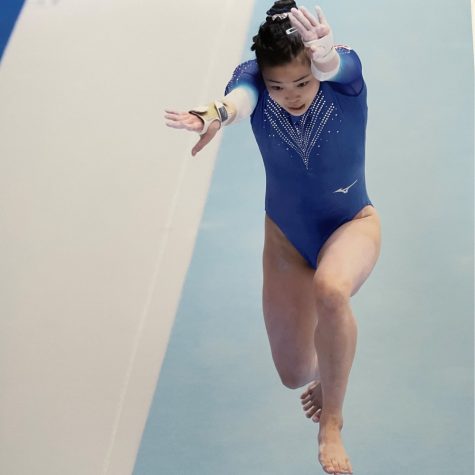
The gymnast is sixteen-year-old Ui Soma, who lives in Belmont, California but is currently training with Japan’s gymnastics team as a hopeful candidate for the 2024 Olympics.
Soma raised her arms in a salute before getting into position. She began to sprint down the runway, towards the vault.
Soma reached the vault table and planted her hands into the ground before using the springboard to propel her body over the top of it. It was beautiful, but the landing caused some issues.
She landed in a strange way, tweaking her knee. Soma limped off of the platform, clearly injured.
Medics examined Soma’s knee, confirming injury. But Soma wanted to complete the competition. The medics heavily taped her knee and hoped for the best.
The next event, which put Soma’s injury to the test, was uneven bars.
NHK Trophy uneven bars
Soma knew the second event was going to be a challenge since it required knee movement to jump up to the bar and dismount from it. But despite the threat of worsening injury, she was determined to try.
Soma marched out onto the mat and looked up at the bar above her head. Then, she took the leap. As hands connected with the bar, she immediately began her series of skills. Soma whirled around the bars, flipping with practiced precision. The routine she practiced for months looked effortless.
She focused on making her flips absolute perfection, but the dismount still loomed.
Soma circled the bar and picked up speed before releasing. She completed two flips before landing, but the impact was not what she expected.
She grimaced, and the pain was evident on her face. Soma kept her composure before the judges, throwing her hands up for one last salute before the pain took over.
As it turned out, the injury was severe. Soma blew out her meniscus and tore her ACL, which knocked her out of contention for the Olympic team. The recovery would take months.
“I don’t get injured that often. When I tore my ACL on vault, it’s a skill that I’ve been doing for a very long time,” Soma said. “It was just kind of shocking, like, oh my gosh. It’s the skill that I’ve been doing every day and [getting injured] can hurt my career in an instant.”
Before the injury, Soma was a top candidate being considered for the Japan National Team, and many had expected her to compete in the next Olympics. After the injury, no one knew whether she would compete again.
Origins
Eight-year-old Soma climbed her way around her childhood. She scaled anything from trees to fences, which caused quite a stir. Since she was an active child, gymnastics was the perfect outlet.
“I started gymnastics because it was recommended by my brother’s soccer teammate’s mom,” Soma said. “Her daughter, the teammate’s sister, did gymnastics and she [told me] ‘You should do gymnastics.’”
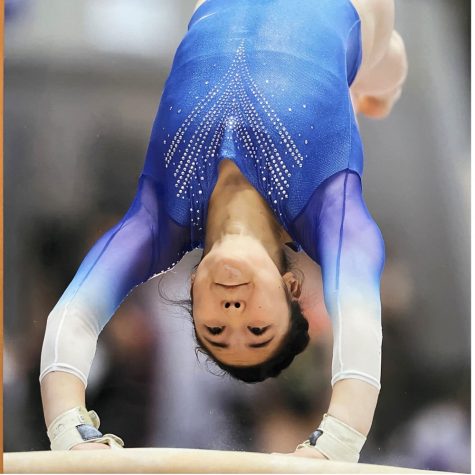
When Soma started gymnastics, she never expected what it had in store for her future.
Her gymnastics career began in Honolulu, Hawaii at Hawaiian Island Twisters. This gym organization is one of the most competitive in the state of Hawaii, and it was a great start for young Soma.
The first step in her gymnastics career was competing at a recreational level. From there, Soma soon joined the competitive team. Coaches recognized her talent at a young age and placed her in the Talent Opportunity Program (TOPS). She thrived in the program and quickly progressed.
After climbing through the levels at a dizzying pace, Soma’s family made the decision to move to California and train at San Mateo Gymnastics, a facility known for producing high-level, successful gymnasts.
“After my level eight season in the summer, I moved to California,” Soma said.
Soma has excelled at the gym. Her trainers and coaches immediately saw she had a spark that set her apart from other athletes, and she soon developed a reputation for her incredible drive and work ethic.
“Her work ethic is really second to none in terms of any athlete I’ve trained. And this goes for even pro athletes. She literally has a motor,” said Ryan Ting, one of Soma’s athletic trainers. “It’s almost like an analogy I give athletes who are super energized, super active. She literally does not know when to stop, which is really good, but it also can be greatly instrumental to know where her limitations are. She’s the hardest worker I’ve ever seen come through our practice.”
Everyday activities
A typical day for Soma is quite a bit different than others her age. Soma used to attend Carlmont High School, however, due to the time demands of extensive training and therapy, she has switched to homeschooling.
Now instead of starting her day with a math class, Soma heads to physical therapy (PT) at Ting Orthopedics. Next, she has tutoring which is followed by the bulk of her day, the gym. Soma is in the gym training for nearly six hours, from 12:30 p.m. to 6:30 p.m. Around 3:00 p.m., Soma receives a small fifteen-minute snack break. Throughout the day, she works on all the different events; floor, uneven bars, vault, and balance beam.
Soma’s best event is the vault. The typical vault section of Soma’s practice lasts about 45 minutes, with only 15 of those minutes spent doing the exercise full out. The rest of the rotation is typically spent on drills and any work she needs to complete. With her injury, a significant portion of the time is dedicated to icing and injury prevention.
“For the rest of the time [during vault], I ice my knee while trying to get as much homework done as possible,” Soma said.
Because of the time demands of elite gymnastics, little room is left for typical teenage activities. There are no Friday night football games, school dances, and late nights with friends; the bulk of her time is spent in the gym. For Soma, this can sometimes be difficult, and she sometimes wishes that she had a bit more free time, especially to socialize, and this makes her miss school as well as hanging out with friends.
“Honestly, I don’t have a social life. I literally don’t do anything. I just work out,” Soma said. “Sometimes I hang out with my friends on the weekend but that’s about it. Mostly I’m either at the gym, PT, or tutoring. I guess the days I’m not doing homework, I don’t want to waste my energy hanging out. I would rather rest at home.”
The few instances of normalcy soon would disappear, as Soma was given the opportunity to train in Japan as an Olympic hopeful. While it gave her a potential chance for Olympic and elite success, it did not come without its difficulties.
A new path
In 2020, during COVID-19, Soma and her family made the big decision to move to Japan. The move was an adjustment to Soma, who had to adapt to both living and training in a different country. Everything was different.
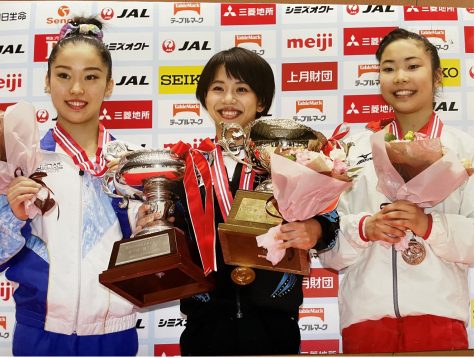
When Soma arrived in Japan, she began training with the gymnastics club Asahi Life, an organization that has produced many successful competitive and Olympic gymnasts. For the first time, she felt a sense of independence in her practices. She was making her own decisions about her training, something she was not accustomed to in American facilities.
“Practice hours are a lot shorter. And it’s a lot freer,” Soma said. “It’s a lot more of what you think you need to do instead of a coach telling you what to do. It’s mostly up to you.”
Typically in the U.S., coaching is a lot more rigid and inflexible. Gymnasts do not typically make their own decisions about their training and are typically given assignments they must complete from their coaches. For Soma, who had grown up with this coaching style, the looser style in Japan was difficult to adjust to.
“My whole life, I’ve been used to people telling me, ‘Do these 10 routines’ or something like that. But when it came from me, it was kind of hard in the beginning, because I just wasn’t used to not having someone telling me what to do,” Soma said.
Even though she was only in Japan for a year, Soma soon solidified herself as one of their top competitors. She successfully competed in several large competitions, captivating the gymnastics community.
In December of 2020, she added yet another gem to her incredible record. Soma placed third in the all-around competition for the 2020 All-Japan Championships, with first and second place being taken by Japan’s Olympic athletes. This competition led to her inclusion on the Japan National Team and helped put her on the path for the Olympics.
Despite Soma’s successes, her injury cut her season short, making the future her future plans for elite competition uncertain. For now, she is focusing on recovery but hopes to return to chasing her Olympic dream.
“Ultimately, the Olympics would be my goal,” Soma said.
While her Olympic goals may be uncertain, Soma has committed to competing at the collegiate level. Five different colleges offered Soma scholarships to compete with their teams. Soma is now committed to Stanford University, and she will be competing in their gymnastics program once she graduates high school.
“It’s an amazing opportunity,” Soma said.
Soma’s career has had its ups and downs, but she has proved countless times she is truly an elite competitor. Whether on the Olympic and international stage or the collegiate level, Soma has shown she has what it takes to excel.


